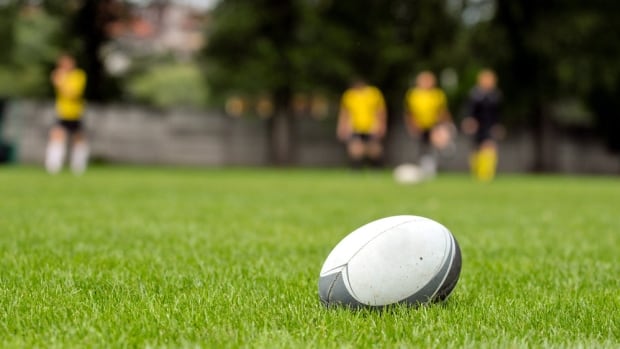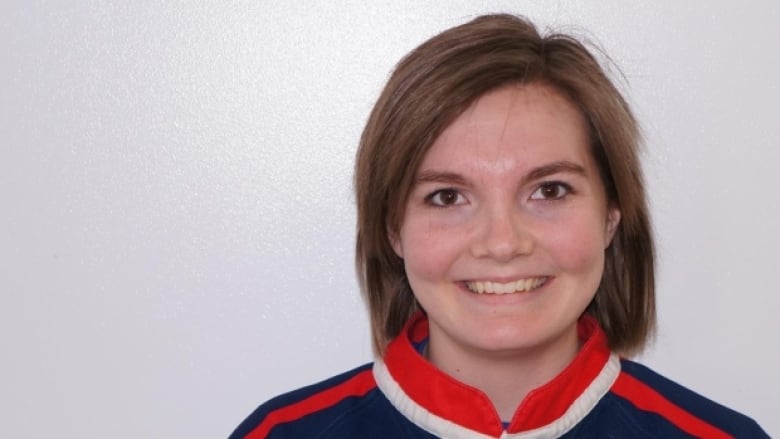
Rugby Canada is poised to expand access to a program aimed at making it easier to track players after they’ve been removed from the field with a suspected concussion.
The blue card program has been piloted in rugby games in Ontario since 2019, with match officials handing the card to a player who’s showing signs or symptoms of a concussion. The process can be initiated by anyone at the field of play, such as teammates, trainers or coaches.
Officials are required to include the details of the card in their match report. That information is filtered into a database that adds a flag to the player’s name, preventing them from being added to a new game sheet until they’ve gone through a return-to-play process, which involves being seen by a doctor or nurse practitioner.
It comes more than a decade after the death of 17-year-old Rowan Stringer, a rugby player who died from second impact syndrome following multiple head injuries in the span of a week in 2013.
Rugby Canada plans to expand the blue card program to other provinces next year, with the goal of eventually having it implemented across the country.
Rugby Canada knew it had to learn from Rowan’s death to try to make the sport safer, according to Jackie Tittley, the sport organization’s manager of training and education.
“[The blue card program] gives us a better ability to track and monitor those players and ensure that they get the care that they need and the clearance that they need to safely return to our game,” she told CBC Sports.
Rowan’s Law passed in 2018
The program was created after Ontario passed a law in Rowan’s name five years ago, following years of advocacy on concussion safety and awareness from Rowan’s family.
Rowan’s Law makes it mandatory for young athletes, parents, coaches, team staff and officials to review Ontario’s concussion awareness resources yearly. It also mandates having a process for removing players from play and returning them to the field following a suspected concussion.

Rugby Canada already had a policy in place to remove athletes from play if they were suspected to have sustained a concussion, but Rowan’s Law pushed the organization to take it a step further and come up with a way to better follow athletes after a possible injury, Tittley said.
A key part of the program is emphasizing to people around the athlete that they have a responsibility to speak up if they see someone who has symptoms of a concussion, even if the athlete themselves hasn’t identified it as a problem.
“It can be really complicated and certainly we need to work with those individuals for them to understand that the faster they get attention, the faster we can rehabilitate them and return them safely to play, and therefore the longer they’ll actually most likely be able to continue in our sport,” Tittley said.
Michael Jorgensen believes he’s suffered two concussions playing rugby, including one that caused him to miss the opportunity to take the law school admission test when he was in university.

Now a PhD candidate at the University of Toronto’s faculty of kinesiology and physical education, Jorgensen studies how athletes navigate concussion risk and how they react to new policies and protocols. He also continues to play the sport and work as a match official.
For the last couple of years, Jorgensen has been studying Rugby Canada’s blue card pilot program in Ontario, interviewing match officials about their experience handing out blue cards.
At first, he said match officials had concerns around liability and whether they’d be qualified to detect concussion symptoms. He believes many concerns have been addressed since the program was fully implemented throughout the province and officials have received more education.
“It’s just reassuring that, OK, we’re not looking for a diagnosis, we’re just looking to play it safe,” Jorgensen said.
Program could be in other provinces next year
The next phase of his research involves interviewing athletes and parents to try to understand any possible barriers to returning to play, such as accessing medical care.
“There’s a lot of strain on the the public health system and often athletes and parents have to try and get in to get a doctor’s note or take time off of work or school or any number of other commitments that they have on the go,” Jorgensen said. “And for more rural communities, that might be even more difficult.”
In an ideal situation, Tittley said a match official would issue a blue card, team staff and teammates would be supportive of the official’s decision, and there would be resources in place to make a plan for the athlete to get the care they need.
“That doesn’t always happen,” she said. “So for us to get an understanding through that research as to why that might be, it’ll certainly help us to improve the program moving forward.”